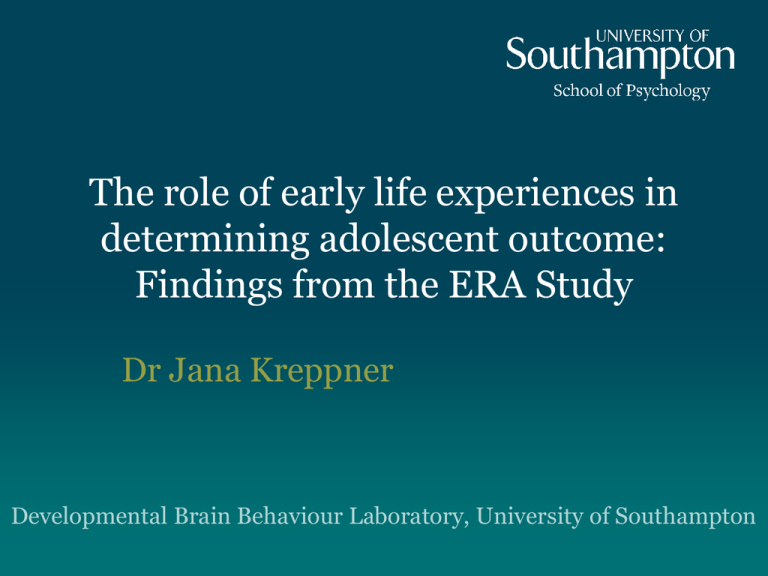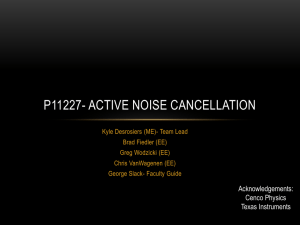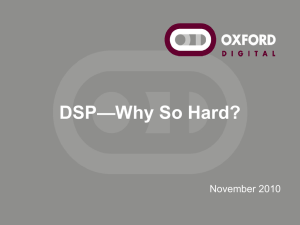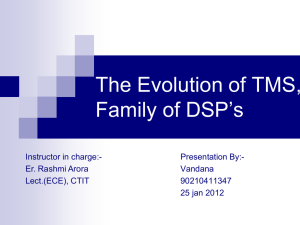Jana Kreppner
advertisement

The role of early life experiences in determining adolescent outcome: Findings from the ERA Study Dr Jana Kreppner Developmental Brain Behaviour Laboratory, University of Southampton Large scale profound global early deprivation in Romanian Orphanages pre-1990s Possibly the most extreme large scale manifestation of early childhood deprivation in recent history Profound global deprivation – severely restricted diet and little of no social or cognitive stimulation 2 ERA Study: • ‘Natural experiment’: Profound deprivation followed by above average rearing in UK families. = opportunity to study effects of radical environmental change on child development. • Change of environment rapid and easily timed • Children placed in institutions in early infancy (so little selection on basis of child impairment) • Children who were in institutions at the time were unlikely a ‘selective’ sample as prior to 1989/90 no children were adopted or return to biological families. • Longitudinal data allows factors associated with successful adoption to be studied. Health and psychological state at time of adoption • Malnutrition • A range of health problems – Skin lesions and intestinal infections – Hepatitis B, HIV, heart conditions, lung damage from infection; anaemia; rickets; ear infections; chest infections • Extreme developmental delay • Little or no language – even for the older children • Institutional behaviours – stereotypies, fears and obsessions • Deficits in social responsiveness The ERA study • Scientific / theoretical questions • Degree of recovery when extremely depriving conditions in early life were followed by generally good conditions in early/middle childhood? • deficits or impairments: the kind ordinarily associated with stress or adversities or would there be specificities? • What mechanisms might be involved in any enduring deficits that occurred? 5 The ERA study design • age-stratified random sampling design (range of 0 - 42 months of age for UK entry) Assessment (years of age) N Age at adoption (months) Origin 4 6 11 15 52 0-6 UK x x x x 21 variable Rom (family) x x x x 46 <6 x x x x 53 6-24 x x x x 45 >24 x x x Rom (institutions) Prospective-longitudinal design Cognitive Level at Entry to the UK and at 11 years (Institution-reared Romanian adoptees) 120 100 80 60 40 Denver Quotient at Entry to the UK n=120 WISC IQ at Age 11 ERA – heterogeneity in outcome IQ age 15 years Step increase in risk for multiple impairment at age 11: Kreppner et al. (2007) Rates with impairment at age 6 Domain % in Romanian adoptees % in within-UK adoptees Fisher exact p Quasi-autism 12.1 0.0 0.005 Attachment problems 20.7 3.8 0.003 Cognitive Impairment 14.0 2.0 0.018 Inattention/overactivity 25.3 9.6 0.019 Peer difficulties 18.9 9.6 NS Emotional difficulties 3.7 9.6 NS Conduct Problems 8.0 9.6 NS Rutter, Kreppner, O’Connor (2001) Summary of key findings across ages: • Profound effects for most at time of adoption. • Remarkable degree of recovery by age 6 – additional catch-up across time. • Deficits and impairment persisted in a substantial minority (considerable heterogeneity) • Effects of length of institutional deprivation – step wise increase with 6 month threshold effect. • Impairments took a surprisingly specific form: Quasi-autistic tendencies Disinhibited attachment Cognitive impairment Inattention/overactivity Rutter & Sonuga-Barke, 2010 QA – behavioural description • Abnormal preoccupations and intense circumscribed interests • Greater, albeit unusual, social interest and flexibility – Substantial overlap with disinhibited attachment • Persistence of pattern and impairment but features diminished in intensity into adolescence Disinhibited Attachment Intrusive social approach and disregard of social boundaries • Lack of reticence/shyness with strangers • Readily goes off with strangers • Limited differentiation among adults • Lack of checking back with parent …She tended to be markedly over familiar with adults, tried to join in adult conversations, cuddled up to men without appreciating the inappropriate nature of this action. When younger, she was strikingly overfriendly with strangers, going up to talk with them, and she was quickly ‘all over’ visitors to the family home. When older, that was less marked, but the social inappropriateness of interactions with peers and with adults remained. Deprivation specific patterns (DSP) Question: Are there specific sequelae of profound early institutional deprivation that differ from the effects of other stresses/adversities? Definition: the concept of DSP is of a pattern that constitutes a distinctive early-appearing response to institutional deprivation that is rarely found in other groups, that is likely to involve an enduring biological effect, and that is not eradicated by postadoption experiences. Rates with DSP patterns across adoptee groups: Pooled comparison Institutional deprivation beyond 6 months QA 0.9% 14.9% DA 7.0% 39.1% CI-dsp 0% 23.4% IO -dsp 0% 16.9% At least 1 DSP (n=51): 7.8% 45.7% None (135) DSP QA OR DA (24) DSP (51) QA OR DA & CI (14) CI (12) QA OR DA & IO (4) QA OR DA & CI & IO (9) CI&IO (3) Total (217) Missing (10) No DSP DSP IO (6) Pooled Comparison >6months ID 106 (92.2%) 50 (54.3%) 9 (7.8%) 42 (45.7%) Persistence of DSPs to age 15: At age 11 Pooled comparison: 6-42 months ID: At age 15 78% With DSP n=9 Without DSP N=7 22% With DSP N=2 19% Without DSP N=8 81% With DSP N = 34 With DSP N = 42 % with DSP Rate of DSP in the subgroup without sub-nutrition: 50 45 40 35 30 25 20 15 10 5 0 45.5 pooled comparison institutional care beyond 6 months 1.3 (Rutter, Kumsta, Schlotz & Sonuga-Barke, 2012) Why was there such varied response to extended profound early ID? • Pre-adoption characteristics? Birth weight Physical and developmental indices at time of adoption • Post adoption family environment? • Genetic vulnerabilities? Moderating role of Genes on Outcome: Example: DAT1 on ADHD symptoms 0.8 0.6 ADHD SYMPTOMS BOTH RISKS 0.4 DEP RISK DAT1 RISK NO RISK 0.2 0 a te n try 6 ye a rs 1 1 ye a rs -0.2 -0.4 6 YEARS 11 YEARS 15 YEARS -0.6 Stevens et al., 2009 Gross Effects on Brain Development – head circumference 44 4 6 11 15 Gross Effects on Brain Development – head circumference Length of Institutional Deprivation b = 1.32*** DSP Length of Institutional Deprivation b = 1.07*** DSP Indirect effect b = 0.250* b = -0.89*** b = -0.28** HC *p <.05, **p <.01, ***p <.001 But the mediating effect is small – there must be more subtle effects of deprivation on the brain to explain impairment. Summary …returning to the initial questions • Degree of recovery when extremely depriving conditions in early life were followed by generally good conditions in early/middle childhood? remarkable degree of early recovery (and evidence of additional late catch up) / effect of length of ID: harmful after-effects were rare in those adopted before the age of 6 months • deficits or impairments: the kind ordinarily associated with stress or adversities or would there be specificities? four patterns that were strongly associated with ID (>6 months) / impairments were unusual and distinctive (especially the social cognitive deficits observed in DA and QA) • What mechanisms might be involved in any enduring deficits that occurred? some evidence for moderation by genetic factors / preliminary evidence for lasting alteration to brain structure and function Implications • Behavioural presentation of psychological impairments may be difficult to distinguish from the ordinary varieties of psychopathology in the general population. • Underlying aetiology may be different in important ways (e.g. in their neurobiology) that have important implications for treatment. Acknowledgments The ERA Team Age 15: Funding Celia Beckett Nuffield Foundation Jenny Castle Department of Health Christine Groothues Helmut Horten Foundation Amanda Hawkins Jacobs Foundation Robert Kumsta ESRC Wolff Schlotz MRC Suzanne Stevens & Edmund Sonuga-Barke Michael Rutter THANK YOU!











